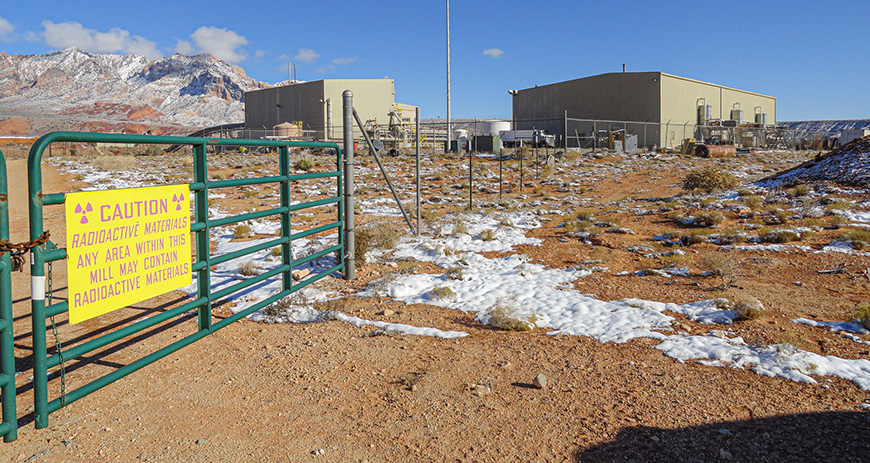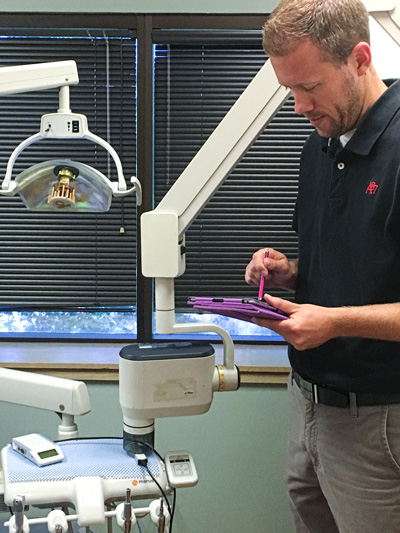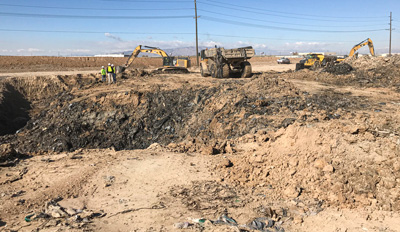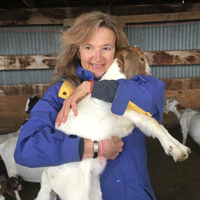
By Christine Osborne
While many of us might not think much about what happens to our trash after we put our can at the curb, the Utah Department of Environmental Quality’s Division of Waste Management and Radiation Control (WMRC) does! You may not realize it, but the Division regulates solid waste landfills so our household waste doesn’t contaminate Utah soils, surface water, groundwater, or air.
But WMRC’s responsibilities don’t stop there. Did you know that the Division makes sure X-rays are calibrated correctly so we aren’t exposed to excessive radiation when our dentist checks for cavities? Or that it ensures that the many beneficial uses of radioactive materials, such as diagnostic and therapeutic medical procedures, are handled safely and performed properly? Did you know that it handles the recycling of used oil and the disposal of waste tires? How about the cleanup activities it oversees that convert contaminated properties into developments that fuel our economy? Or the regulations and inspections that ensure the proper disposal of hazardous and low-level radioactive waste? While WMRC may not have as high a public profile as other divisions at DEQ, its work is critical to protecting Utah’s environment — which is why we want to share some of WMRC’s recent accomplishments with you.

X-ray Program
Medical and dental X-rays account for the majority of the average person’s exposure to man-made radiation. While radiation is an invaluable tool in the diagnosis, treatment, and management of disease, overexposure to radiation during diagnostic X-rays may be responsible for more than 3,500 cancer deaths a year nationally. With over 8,900 tubes or machines in use in Utah for health care, research, and industry, the proper use of X-rays is critical to protecting human health.
The X-ray program prevents and minimizes radiation exposure by ensuring that X-ray machines and their operators meet licensing requirements. The program’s two health physicists are on the road most days, visiting facilities across the state to calibrate machines, chat with operators, provide guidance on the proper use of machines, and answer questions. This personal touch puts operators at ease and provides WMRC’s health physicists with an opportunity to catch small issues before they become big problems.
Waste Tire Recycling Program
The Waste Tire Recycling Program oversees the storage, disposal, and recycling of waste tires to reduce health and safety hazards, decrease the number of tires in landfills, and encourage the tire recycling industry. The Waste Tire Recycling Fund provides partial reimbursement of the cost of transporting, processing, recycling, and disposing of waste tires.
In 2018, the program provided funding for the cleanup of tire piles at the Carbon County and Sevier County landfills. The cleanups removed a total of 330 tons of waste tires or an estimated 26,000 tires. The program also provided funding to clean up 195 tons (an estimated 15,000 tires) from an abandoned tire pile in Vernal. Approximately 1.96 million tires were recycled in 2018 from the state-wide collection of waste tires.
Uranium Mills Program
WMRC issues licenses and permits for uranium mills that extract uranium from mined ore or recover uranium from materials containing uranium, known as alternate feed material. Program staff inspect the facilities, monitor for contaminants, and oversee remediation efforts.
In September 2019, the U.S. Nuclear Regulatory Commission (NRC) performed an audit of the Uranium Mills Program for 2015-2019. The program received the highest rating possible from the NRC. The program received the same rating during the 2015 NRC audit for 2011- 2015. This recognition by the NRC shows that the Uranium Mills Program has performed at the highest possible level for the past eight years.

Corrective Action Program
The Division works with companies through its Corrective Action Program to remediate environmental contamination from the improper storage, treatment, or disposal of solid or hazardous waste. Corrective Actions (CAs) ensure that facilities deal with these releases properly to minimize harm to the public and the environment. WMRC’s collaborative efforts with businesses and developers on these cleanups lead to the timely resolution of environmental issues and a faster return of contaminated lands to beneficial use.
For one recent CA project, Woodbury Corporation requested the section’s involvement in the purchase of land in Spanish Fork, Utah, that included a closed solid-waste landfill formerly operated by the city. The CA section worked with the city and its environmental consultant on a plan to relocate solid-waste material from the old landfill. The consultant oversaw the removal and relocation of industrial toxic substances, including car batteries, solvent drums, and other industrial wastes from the landfill, to prevent the possible spread of contamination. These old wastes were transported to the top of the old landfill and recapped using clay soils from the removal area. Site Management Plans and Environmental Covenants were developed for different parcels of the land to address groundwater contamination on the property. The property was ultimately purchased by Lowes and currently includes mixed commercial businesses.
A Promise to Utah Residents
WMRC ensures the safe and proper management of solid waste, hazardous waste, radiation sources, and low-level radioactive waste disposal while also promoting education and recycling efforts. Whether it’s holding trainings for businesses that manage or generate small quantities of hazardous waste, instructing do-it-yourselfers (DIYers) on the proper methods for recycling used oil, issuing permits and conducting inspections on large hazardous waste disposal facilities, overseeing the proper management and use of radioactive materials, or ensuring that low-level radioactive waste transported to Utah meets safety requirements, WMRC works hard to protect Utah residents and the environment from possible contamination or exposure to harmful waste products. And that’s a promise the Division endeavors to meet every day.
For more information about the many ways WMRC safeguards human health and the environment, visit the Division’s home page.

I am a content strategist/communication specialist at the Utah Department of Environmental Quality. I have a Masters in Strategic Communication (MSC) degree from Westminster College and earned my Accreditation in Public Relations (APR) from the Public Relations Society of America (PRSA). I currently teach Integrated Marketing Communication to graduate students in the MSC program at Westminster. In a previous life, I was a bassoonist with the Utah Symphony for 26 years. I love to hike, bike, camp, read, garden, geek out on all things science, and spend time with two college-age sons. I volunteer with a number of local refugee organizations and am currently a teen mentor with the 4-H New American Goat Club and Teen Leadership Club.

